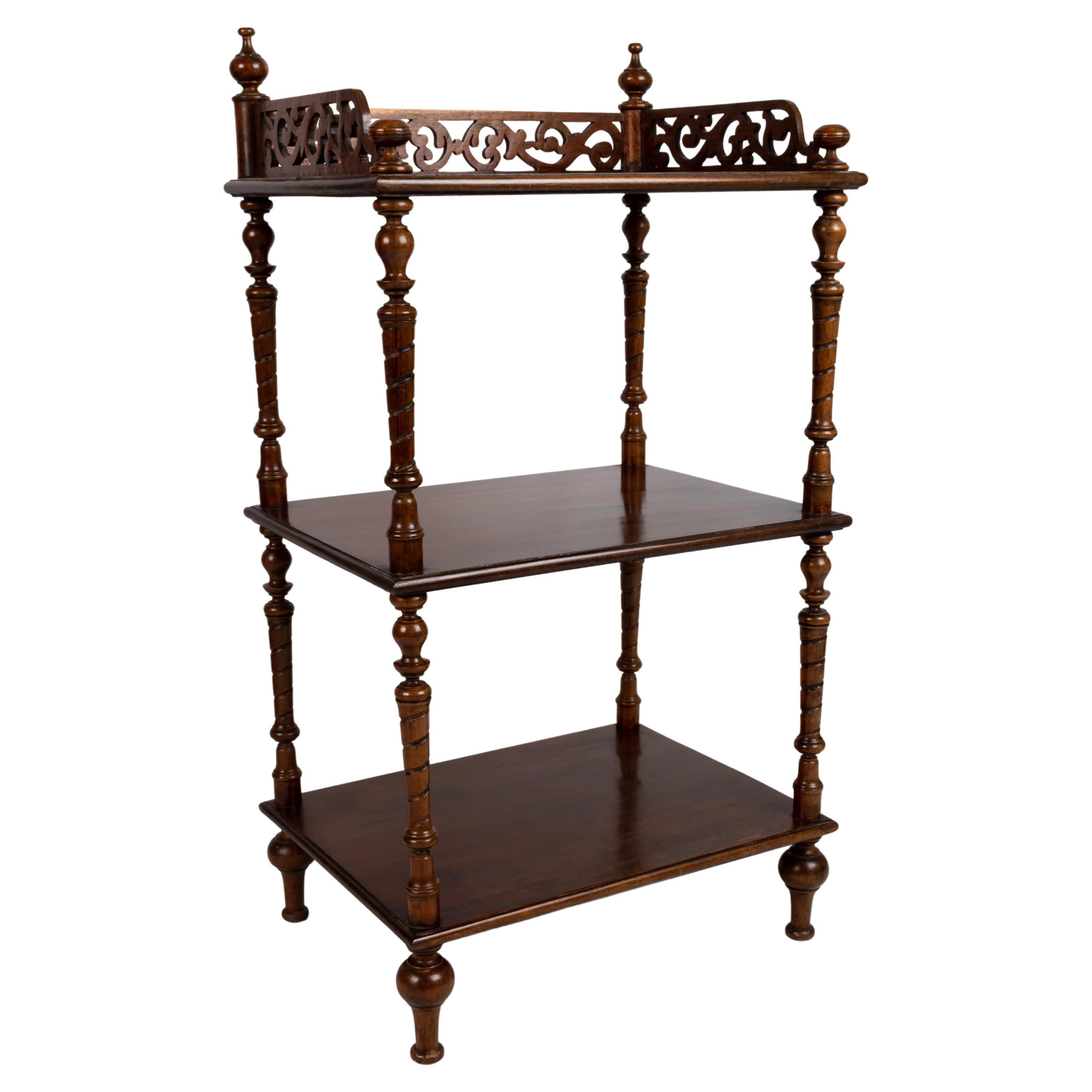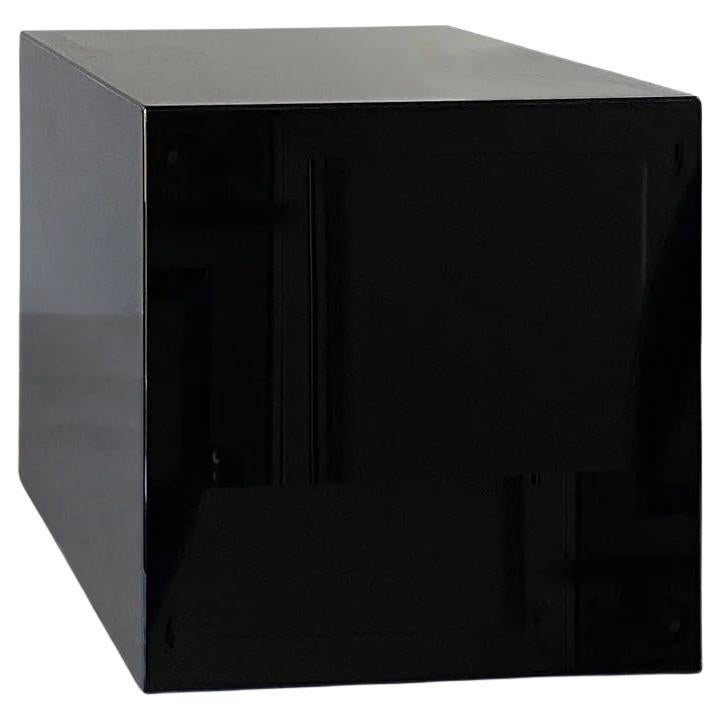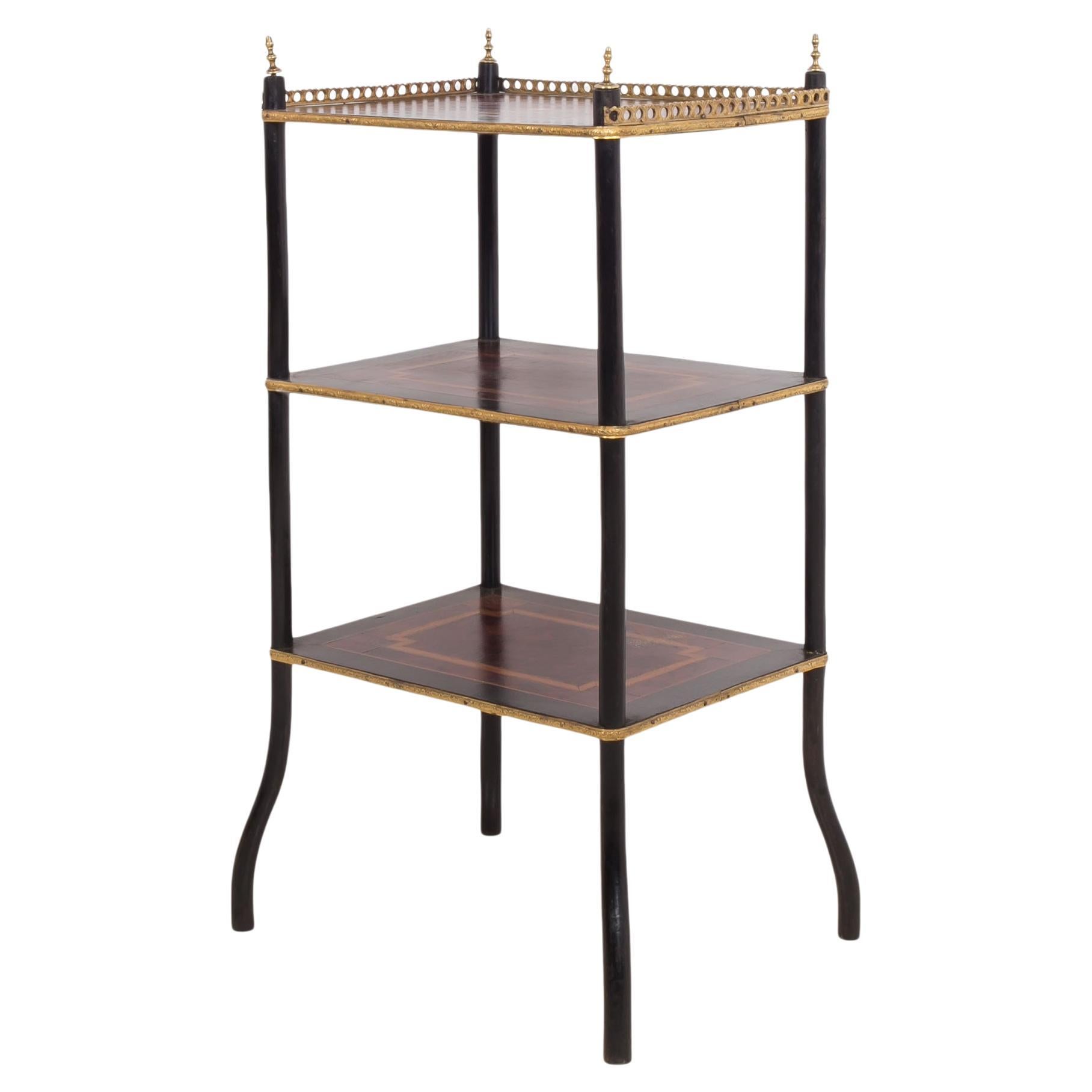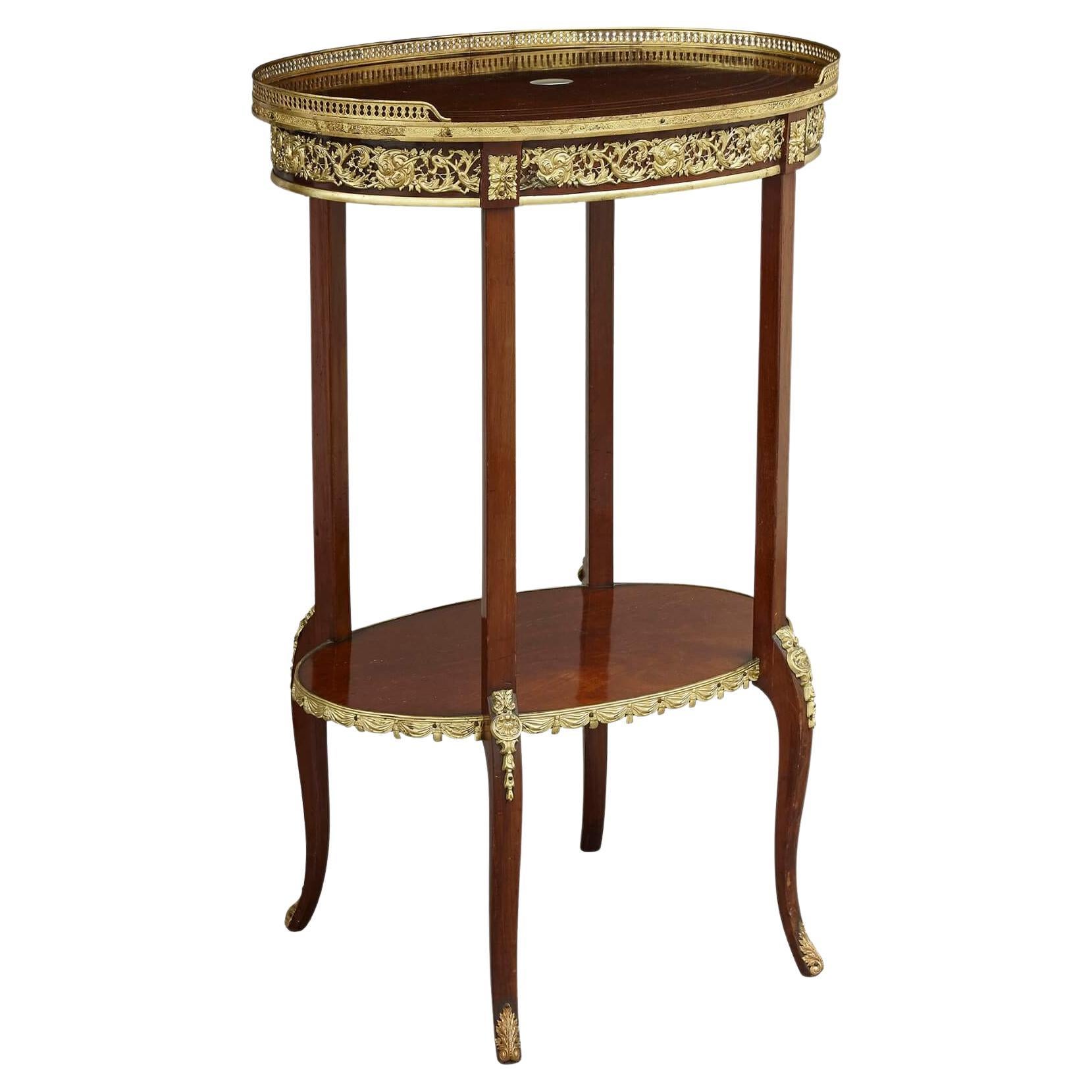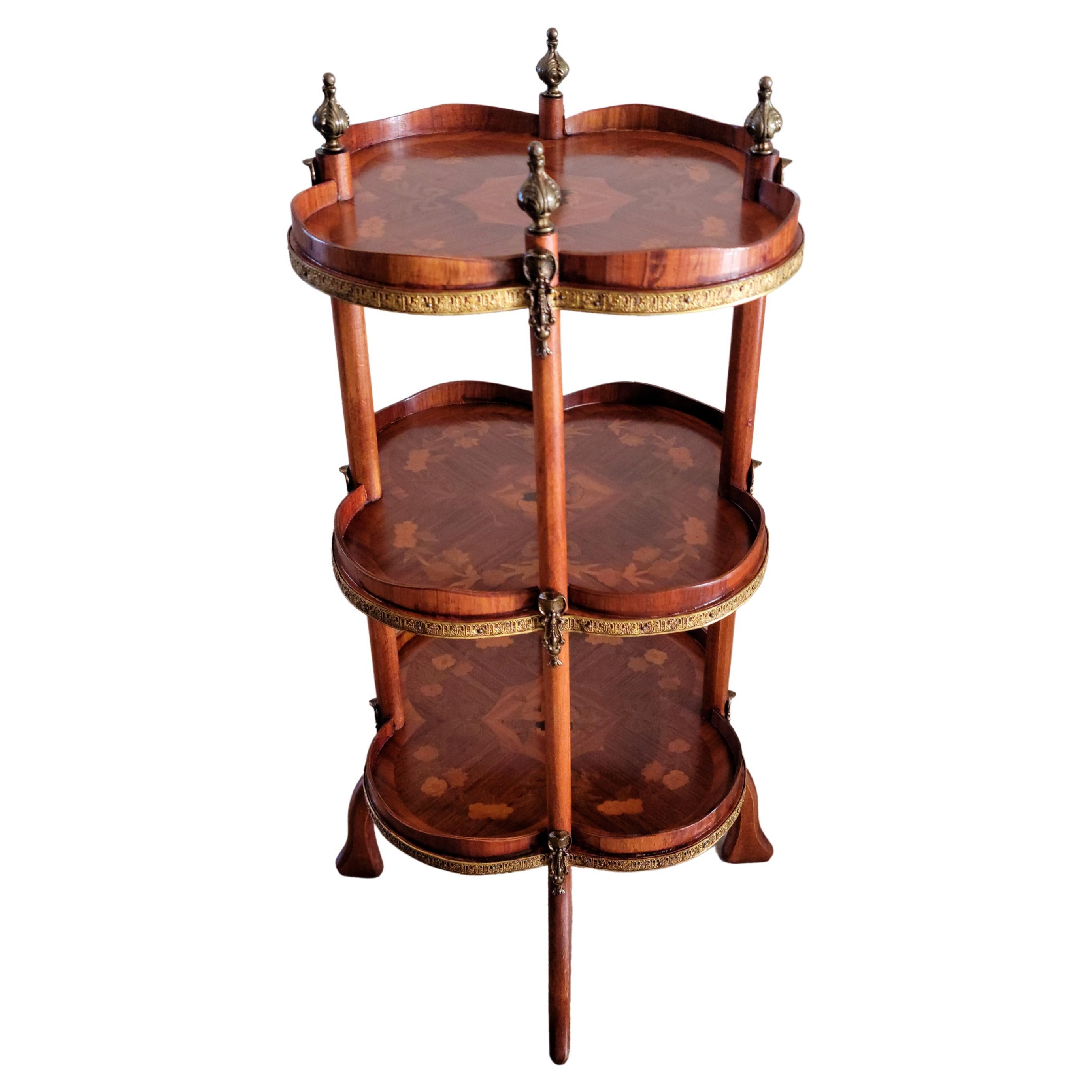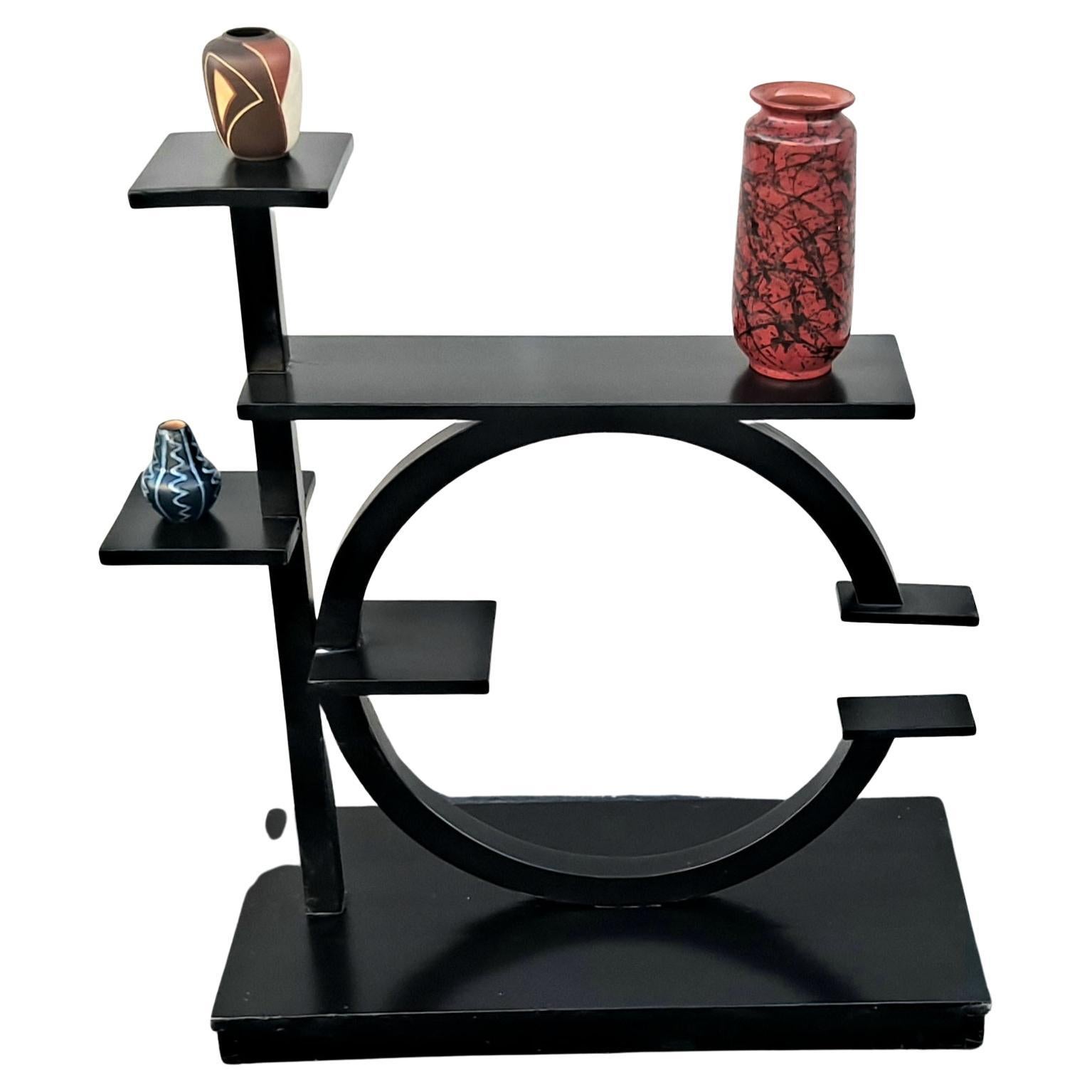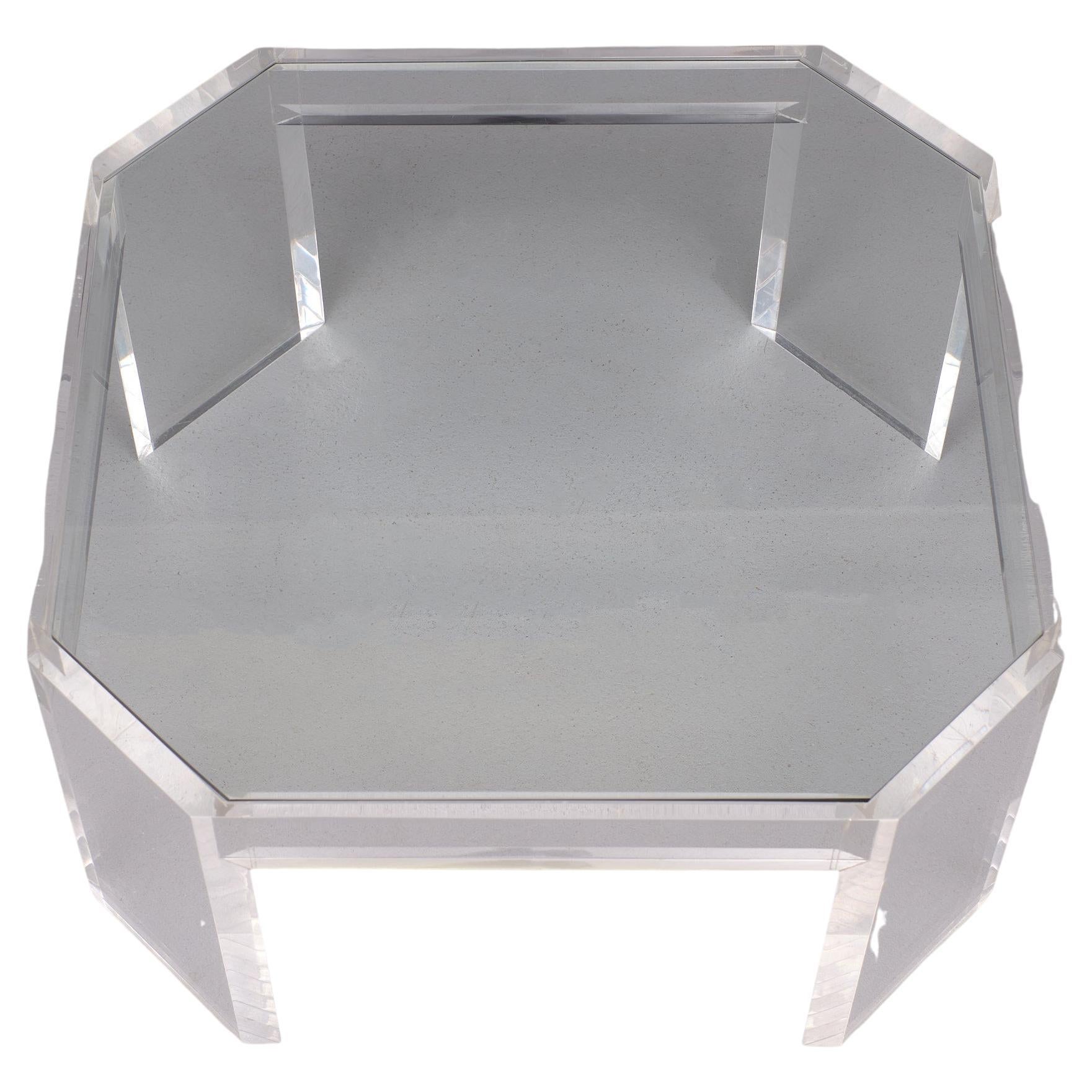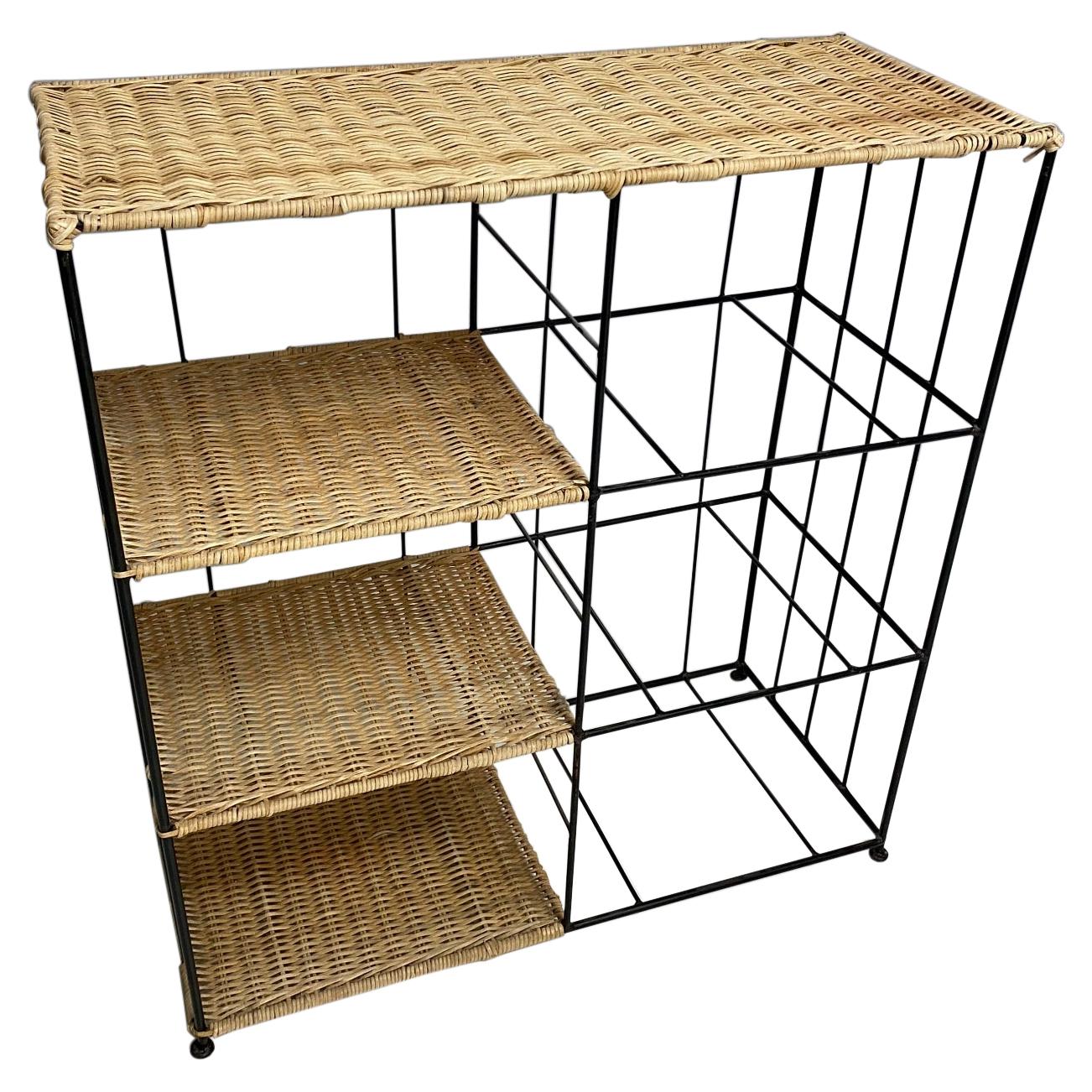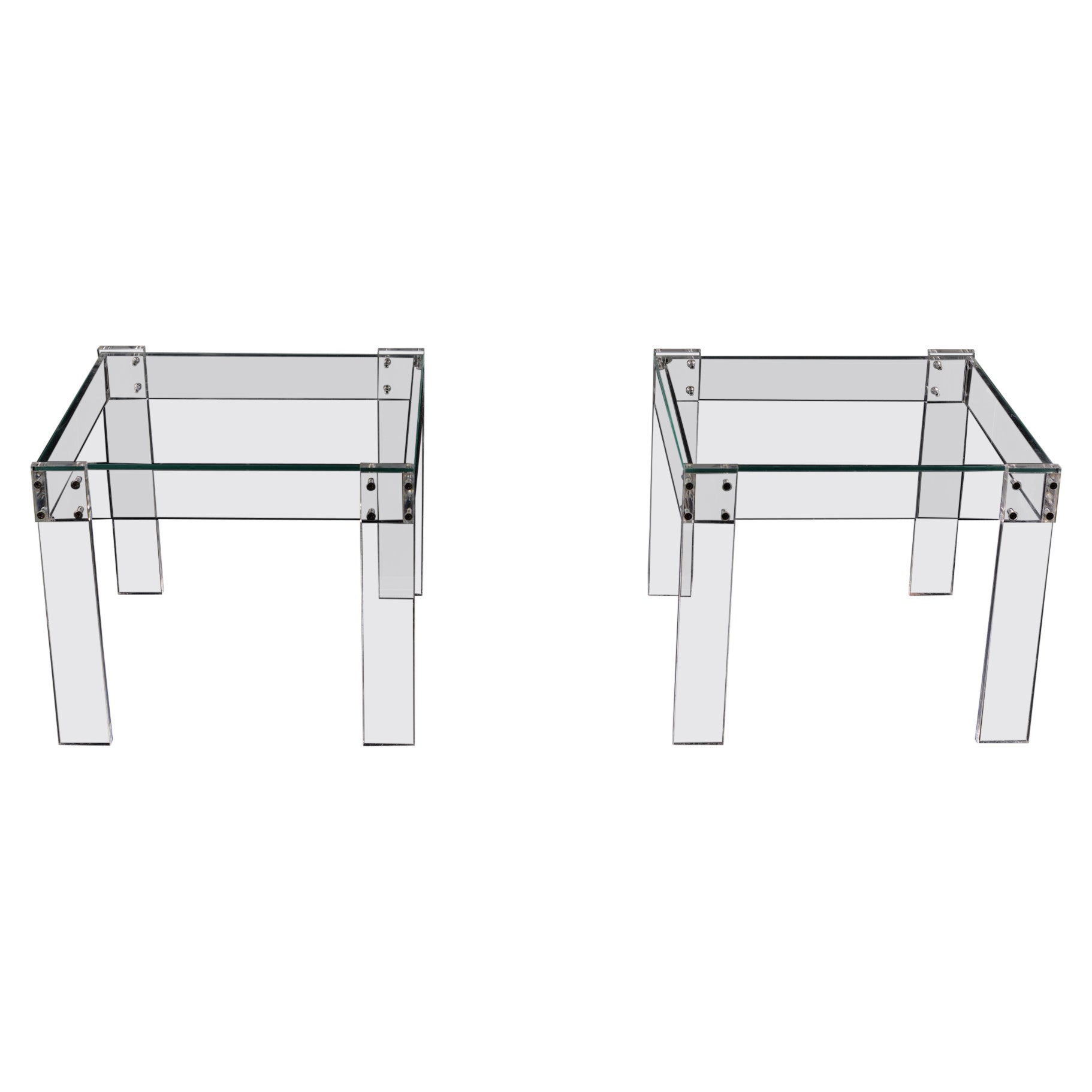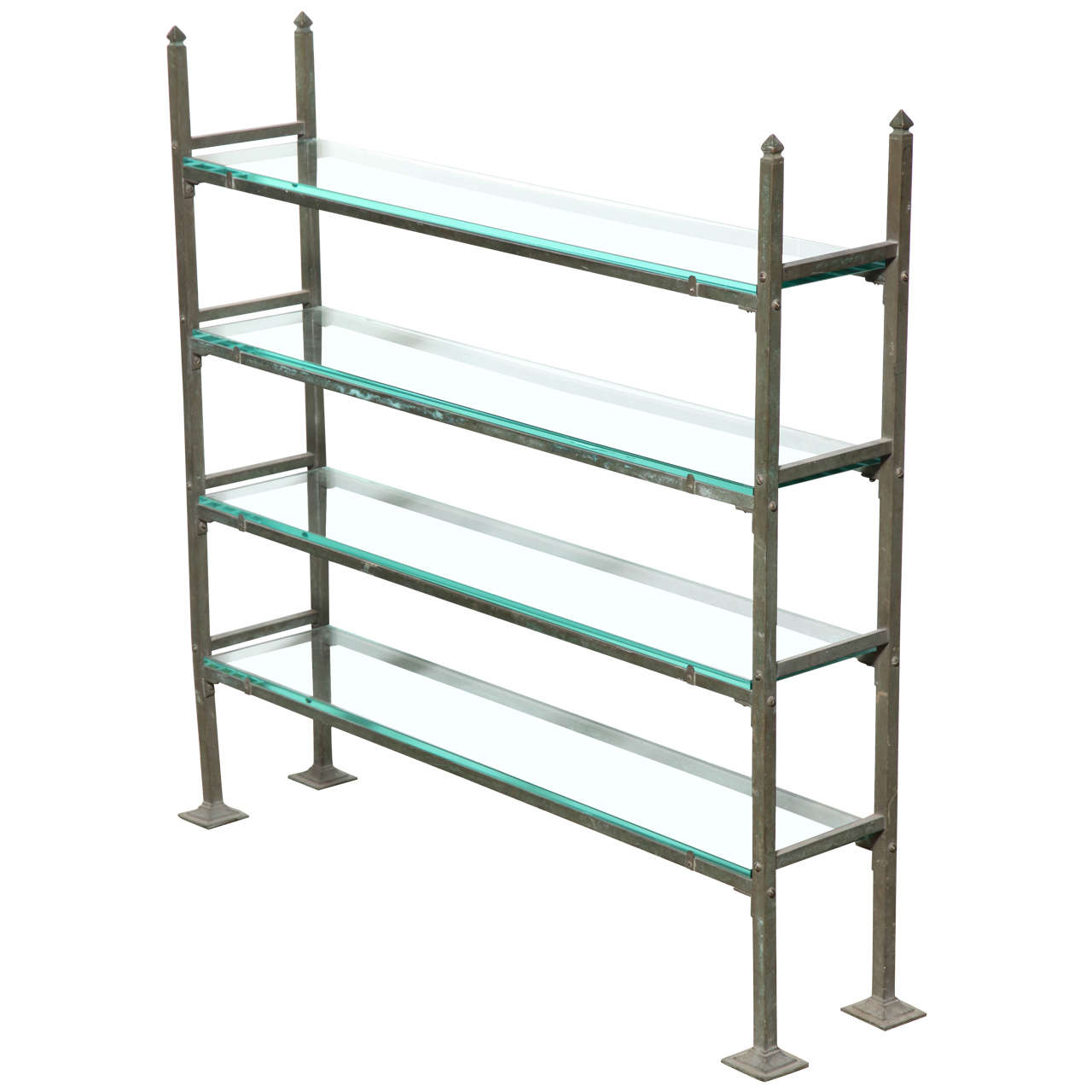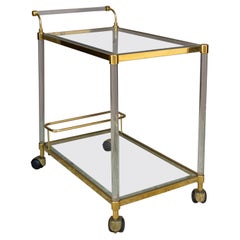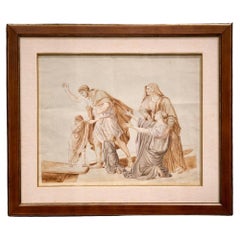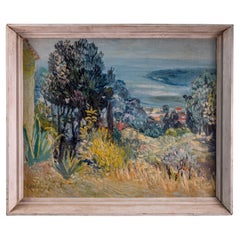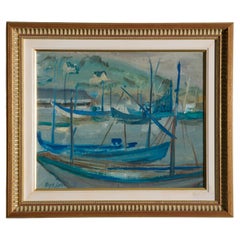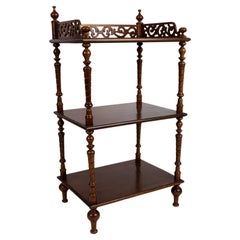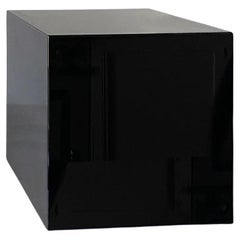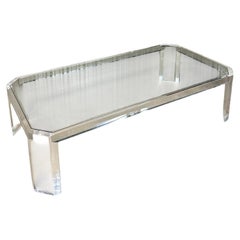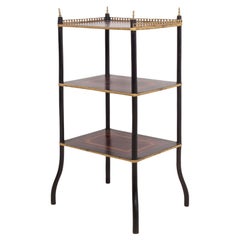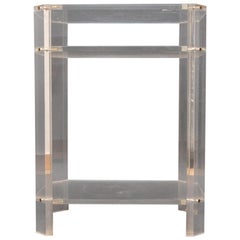
Modern French Lucite Étagère Three Shelves by David Lange
View Similar Items
Want more images or videos?
Request additional images or videos from the seller
1 of 8
Modern French Lucite Étagère Three Shelves by David Lange
$1,193.80List Price
About the Item
- Creator:David Lange (Manufacturer)
- Dimensions:Height: 26.37 in (66.98 cm)Width: 19.48 in (49.48 cm)Depth: 12.99 in (33 cm)
- Style:Modern (Of the Period)
- Materials and Techniques:
- Place of Origin:
- Period:
- Date of Manufacture:1970
- Condition:Wear consistent with age and use.
- Seller Location:Roma, IT
- Reference Number:Seller: EMI 3381stDibs: LU4827220907512
About the Seller
5.0
Platinum Seller
Premium sellers with a 4.7+ rating and 24-hour response times
Established in 2005
1stDibs seller since 2019
90 sales on 1stDibs
Typical response time: 2 hours
Authenticity Guarantee
In the unlikely event there’s an issue with an item’s authenticity, contact us within 1 year for a full refund. DetailsMoney-Back Guarantee
If your item is not as described, is damaged in transit, or does not arrive, contact us within 7 days for a full refund. Details24-Hour Cancellation
You have a 24-hour grace period in which to reconsider your purchase, with no questions asked.Vetted Professional Sellers
Our world-class sellers must adhere to strict standards for service and quality, maintaining the integrity of our listings.Price-Match Guarantee
If you find that a seller listed the same item for a lower price elsewhere, we’ll match it.Trusted Global Delivery
Our best-in-class carrier network provides specialized shipping options worldwide, including custom delivery.More From This Seller
View All1970s Modern Italian Golden Brass and Lucite Trolley
Located in Roma, IT
Golden brass and lucite trolley from the 1950s.
The trolley has two glass shelves finished in brass.
The shelf edges are in elegant golden brass.
The...
Category
Vintage 1970s Italian Modern Carts and Bar Carts
Materials
Brass
$1,289 Sale Price
40% Off
Follower Jacques-Louis David Neoclassical Red Chalck French Paper
Located in Roma, IT
Period red chalck watercolor pencil drawing with neoclassical subject.
Depicting the Atilius Regulus departing for Carthage.
Atilius Regulus was a Roman statesman taken prisoner during the first Punic War between Rome and Carthage.
The highly dynamic and evocative scene is undoubtedly from ancient...
Category
Antique Early 19th Century French Neoclassical Drawings
Materials
Wood, Paper
Modern Signed Painting French Riviera Landscape
Located in Roma, IT
Painting oil on canvas by the artist William Langley
Title “View of Menton Cap Martin”
It depicts a beautiful view of the French Riviera, in particular Cap Martin-Menton
Original gr...
Category
Early 20th Century French Modern Paintings
Materials
Canvas, Wood
Modern French Painting Signed Marine
By Moya Dyring
Located in Roma, IT
Beautiful and evocative oil painting by the great French school modern artist Moya Dyring specializing in marinas.
It depicts a harbor with boats probably from the French Riviera painted with great intensity but giving, at the same time, a sweet sense of serenity.
Moya Claire Dyring was born in Coburg, Victoria in 1909.
She produced drawings, oil paintings and pastels.
She was one of the first women artists to embrace Modernism and exhibit cubist paintings in Melbourne.
For several years she was a member of the modern art community known as the Heide Circle, named after the home of art collectors John and Sunday Reed, and now the Heide Museum of Modern Art.
Every item of our Gallery, upon request, is accompanied by a certificate of authenticity issued by Sabrina Egidi official Expert in Italian furniture for the Chamber of Commerce of Rome and for the Rome Civil Courts.
Dyring then travelled to the USA and France, where she lived most her life. Her work is held in the Heide Museum as well as the National Gallery of Australia.
One of her earliest works in cubist in style, Melanctha, 1934, was acquired by Sunday Reed.
In 1934 Dyring also painted Portrait of Sunday Reed which went into the Reed's collection, along with a cubist style Portrait of a Woman from the same year.
While her early works were figurative or cubist, in France she turned to landscape as she travelled to various towns throughout France.
In her later years, unable to travel freely, she painted children against the backdrop of Paris.
As time passed, she was largely glossed over and not included in major exhibitions of artists, especially women artists, of the 30s, 40, and 50s.
In 2002, at the University of Melbourne, Gaynor Patricia Cuthbert delved into her life and work for a doctoral thesis, helping to bring back attention to her work.
Collection
The Heide Museum of Modern Art holds many paintings and drawings, some acquired through the John and Sydney Reed collection.
The National Gallery of Australia, Canberra includes one drawing.
The Art Gallery of New South Wales holds multiple works.
Third child of Carl Peter Wilhelm Dyring, medical practitioner, and his second wife Dagmar Alexandra Esther, née Cohn, both Victorian born. Moya was educated (1917-27) at Firbank Church of England Girls' Grammar School, Brighton.
After visiting Paris in 1928, she studied (1929-32) at the National Gallery schools, Melbourne, and shared fellow student Sam Atyeo's interest in artistic innovation.
Classical modernism engaged her attention in the early 1930s.
She painted at the George Bell school and studied under Rah Fizelle in Sydney; Mary Alice Evatt and Cynthia Reed were her colleagues.
For several months in 1937 she took charge of Heide, the home and garden of John and Sunday Reed, at Bulleen, Melbourne.
The Reeds were pivotal both to her sympathy for modernism and her belief in congenial fellowship.
She enjoyed something of the intense relationship with Sunday Reed that the latter would subsequently extend to Joy Hester.
In June Dyring held an exhibition, opened by H. V. Evatt, at the Riddell Gallery, Melbourne.
Less enthusiastic than the Reeds and the Evatts about her art, Basil Burdett wrote of her 'somewhat incoherent interpretation of modern ideas', although he did acknowledge that her work had 'audacity of colour and a certain monumental feeling for form . . . qualities rare enough in Australian painting'.
In August Dyring embarked for Panama whence she travelled by bus to New York, breaking her journey to view major galleries.
She had intended to paint in the United States of America, but disliked the work of contemporary American artists and sailed for France.
In 1938 she was based in Paris, taking advantage of Atyeo's contacts within the avant-garde.
She studied at the Académie Colarossi, the Académie de la Grande Chaumière and with Andre Lhote, although by October she denounced him as a 'racketeer'.
In 1939 Dyring and Atyeo settled on a farm at Vence, France; inspired by memories of Heide, they grew fruit and flowers.
Sam accepted a commission to decorate a house in Dominica, West Indies, leaving Moya at Vence.
Evacuated to Australia via South Africa, where she painted and searched for tribal art, she then journeyed to Dominica and married Atyeo.
They were not happy, neither painted and Dyring was ill. Evatt offered Atyeo work and Dyring accompanied him to the U.S.A.
She viewed art, painted occasionally and claimed to have exhibited in Washington in 1943.
After World War II Evatt found Sam various postings, while Moya returned to Paris to pursue a full-time career in art.
They were to be divorced in 1950.
From about 1946 Dyring's art was more personal than innovative.
She gained a considerable reputation among French regionalist and nationalist artists for her sympathetic appreciation of provincial scenes and life.
Bernard Smith placed her in the French tradition of intimiste painters.
In 1948 she leased and renovated an apartment on the Ile St Louis, which, as Chez Moya, became a centre for Australians who enjoyed her hospitality, cooking and practical assistance.
She revisited Australia and exhibited in various cities in 1950, 1953, 1956, 1960 and 1963; the press carried her reports of Parisian cultural life.
Dyring held a solo exhibition in London in December 1949 and was in close contact with expatriate Australians, among them Loudon Sainthill, Donald Friend...
Category
Vintage 1950s French Mid-Century Modern Paintings
Materials
Wood
Modern Framed Italian Portrait by Tito Corbella
By Tito Corbella
Located in Roma, IT
1930s painting by the famous Italian artist Tito Corbella
Original gilted frame
Corbella worked on illustrations not only in the field of advertising; he worked for the Officine Ric...
Category
Vintage 1930s Italian Art Nouveau Paintings
Materials
Wood, Paper
19th Century Historical English Painting David Wilkie
By Sir David Wilkie
Located in Roma, IT
Sir David Wilkie RA (18 November 1785 – 1 June 1841)
“The Parish Beadle”
Oil on canvas
This important painting is probably a sketch for the large painting exhibited at Tate Britain....
Category
Antique Early 19th Century English Empire Paintings
Materials
Canvas, Wood
You May Also Like
Antique English Victorian Carved Mahogany Whatnot Etagere Shelves C.1880
Located in London, GB
Antique English Victorian carved mahogany whatnot Etagere C.1880
A late Victorian mahogany whatnot, of three open tiers, with finials, a fret carved...
Category
Antique Late 19th Century English Victorian Shelves
Materials
Mahogany
David Lange Perspex Side Table
By David Lange
Located in London, GB
A rare cube shaped side table in mirror polished black perspex with David Lange label.
David Lange was an early exponent of perspex furniture designing ve...
Category
Vintage 1970s French Side Tables
Materials
Plastic
Vintage French Lucite Coffee Table by David Lange
By David Lange
Located in London, GB
A very stylish and extremely well made vintage French Lucite coffee table by David Lange, dating from the 1970’s.
This is of superb quality, it is a great size and has a gorgeous de...
Category
Vintage 1970s French Mid-Century Modern Coffee and Cocktail Tables
Materials
Lucite
French Etagere, 19th Century, Original Marquetry
Located in Wrocław, Poland
This delightful etagere comes from France and was made around 1850. A truly appealing example of marquetry art! Each shelf is inlaid with various wood types creating geometrical decorative patterns. Top tier crowned with original brass gallery. All three elements put together by slender ebonised legs...
Category
Antique Mid-19th Century French Shelves
Materials
Walnut
French Transitional Style Ormolu Mounted Wood Étagère
Located in London, GB
French Transitional style ormolu mounted wood étagère
French, late 19th century
Measures: Height 80cm, width 54cm, depth 37cm
This fine étagère—a shelved side table...
Category
Antique Late 19th Century French Side Tables
Materials
Ormolu
Vintage French Gilt Bronze Mounted Mahogany Marquetry Tiered Etagere Table
Located in Forney, TX
A stunning example of refined French elegance, sophistication, and rich luxurious warmth.
Born in France in the mid-20th century, the finely hand-crafted mahogany étagère features ...
Category
Mid-20th Century French Belle Époque Side Tables
Materials
Brass, Bronze
